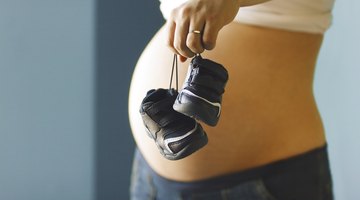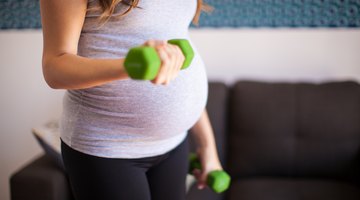Can Your Heart Muscle Ache After First Starting to Exercise?
Since the heart is a muscle, you may wonder if it will ache like other muscles when you first start to exercise. Unlike other muscles, your heart never gets out of shape from lack of exercise; your heart beats every day, every hour, every minute, no matter what you do.
Starting an exercise program may increase the workload on your heart, but it shouldn't cause muscle ache or discomfort.
Angina, pain caused by decreased blood flow, can occur when you exercise if you have heart disease. See your doctor before starting a new exercise program.
Non-Cardiac Chest Pain
You may experience an increase in chest pain when you first start to exercise, but the discomfort often isn't related to your heart. You can injure chest muscles, cartilage, ligaments and tendons when you first start to exercise, and any one of these can cause chest pain. If you have exertional asthma or other lung conditions, you may experience chest pain from not getting enough air into your lungs.
If you eat a heavy meal before exercising, you may experience pain from your stomach. Young people are more likely to experience non-cardiac chest pain while exercising than older adults, according to Jennifer S. Li, MD, MHS, in an article on the website Duke Health.
Stable Angina

How to Tone Up a C-Section Belly
Learn More
Exercise may exacerbate stable angina, a heart condition caused by narrowed blood vessels leading to the heart. Exercise increases your body's oxygen demands. As your heart tries to beat harder and faster to meet your oxygen needs, you may feel chest pain if your blood vessels are partially blocked. When you stop exercising, the pain disappears as the blood vessels relax. Stable angina usually last between one and 15 minutes, according to an entry on the website Medline Plus, a service of the U.S. National Library of Medicine. Taking nitroglycerin, which dilates the blood vessels to increase blood flow, normally relieves it.
Coronary artery bypass surgery may become necessary if you have frequent bouts of pain or if your blood vessels have nearly complete occlusion. Unstable angina is more severe, is often unrelated to exercise and is more likely to lead to a heart attack.
Prevention
See your doctor for a medical evaluation before beginning a new exercise program to make sure that you don't have any heart conditions that might interfere with your ability to exercise. Your doctor may want to do an electrocardiogram, a graph that represents the electrical activity of your heart.
If you have known heart disease, he might do a stress test to determine your heart's ability to handle the extra workload. As you exercise, you can increase your heart's ability to beat harder and faster to supply your oxygen needs.
Considerations

Can Exercising Kill an Unborn Baby?
Learn More
If you experience chest pain during exercise, don't assume that it's nothing more than a pulled muscle. On the other hand, don't jump to the conclusion that every twinge you feel means you're going to have a heart attack.
Signs of a heart attack include pain that may radiate down your left arm; the pain may feel crushing. The pain of a heart attack normally lasts 10 to 15 minutes, reports the Australian government health website, Better Health Channel; you may also feel a sense that something is very wrong. Call 911 if this happens; don't attempt to wait it out or to drive yourself to the hospital. If you take nitroglycerin, follow your doctor's instructions on how many to take before going to the hospital.










